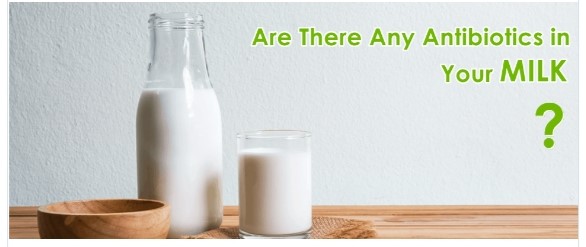News
Antibiotics in Milk Regulation

Why do farmers use antibiotics in livestock production?
First, antibiotics are used to prevent, treat and control bacterial infections in livestock. Just like humans, animals can contract infections, such as pneumonia. Antibiotics are used to humanely and economically treat and prevent these diseases. While often portrayed as cruel and uncaring by some in the media, the vast majority of livestock producers are very concerned about the welfare of animals under their care. Leaving sick animals to suffer from infections that are easily treated with antibiotics is cruel and inhumane. In addition to their humanity, farmers stay in business and feed their own families by earning profits through livestock and milk production. Unhealthy animals are unprofitable, can infect other animals in the herd and may die. In short, it is in farmers’ best interest to provide appropriate veterinary care for sick and injured animals.
Secondly, antibiotics can increase animal performance. By using antibiotics, farmers can produce more meat with less feed input. Some antibiotics change the colony of bacteria in the rumen (one of four stomachs in cattle) to produce more of the compounds needed by cattle for growth. Some are used prophylactically to prevent diseases that are very difficult to control once the animal is infected. Importantly, the antibiotics used to increase production (a class of products referred to as “ionophores”) are not used to treat people, nor do they leave residues in meat if properly used. Antibiotics used to treat diseases in humans can no longer be used in livestock to improve production—they are strictly used for the prevention, control and treatment of disease.
Why has the use of some antibiotics in U.S. animal agriculture been discontinued or regulated?
The pharmaceutical industry voluntarily agreed to eliminate non-therapeutic uses of some classes of antibiotics to reduce the likelihood that resistant bacteria develop and threaten human health. There are several classes of antibiotics that are used in both humans and livestock production. There is some probability that the continued use of these antibiotics to improve performance of livestock would have sped up resistance in bacteria that infect people. To our knowledge, there have been no documented cases of infections in people attributed to antibiotic-resistant bacteria originating from livestock. However, cases of individuals being colonized (the presence of bacteria without illness) by antibiotic-resistant bacterial strains have been documented. These strains are believed to have originated in livestock and the colonized individuals often have been in contact with livestock (Landers et al.). So, there are reasons to be concerned about the potential for impacting human health. Out of an abundance of precaution, classes of antibiotic drugs used in human medical care cannot be used in animals except for purposes of disease prevention, control and treatment.
Why not eliminate all antibiotics in animal agriculture?
There are three reasons not to eliminate antibiotics in animal agriculture. First, it would be inhumane to allow animals to suffer when they contract diseases that can be treated or prevented with antibiotics. Second, it is unclear what the public health benefits would be from eliminating usage for prevention, control and treatment of disease in animals. Further study is warranted, but it is likely that the animal welfare and economic impacts would far outweigh the limited benefits derived from a complete ban. Lastly, it is not economically feasible to allow animals to suffer and/or die from treatable and/or preventable diseases. The agricultural and food sector contributes about $1 trillion to the U.S. economy and provides about 11 million jobs, 21 percent of all jobs in the U.S. If antibiotics were totally eliminated, far fewer meat and milk animals would be produced in the U.S., making food far more expensive and eliminating many jobs. The poorest of U.S. citizens would suffer the most from increased food prices. Given the U.S. exported over 3.5 million metric tons of meat products worth over $12.3 billion in 2016, foreign consumers would also be impacted, with the poor the most significantly harmed.
PREVIOUS:5 Medications That Can Interact With Dairy Products
No next
CATEGORIES
LATEST NEWS
CONTACT US
Mobile:+86-18612182039
Tel:+86-029-85274126
Whatsapp:+8618612182039
Email:info@watarbio.com
Add:No. 12, Hongzhuan South Road, Yanta District, Xi’an 710061, China
